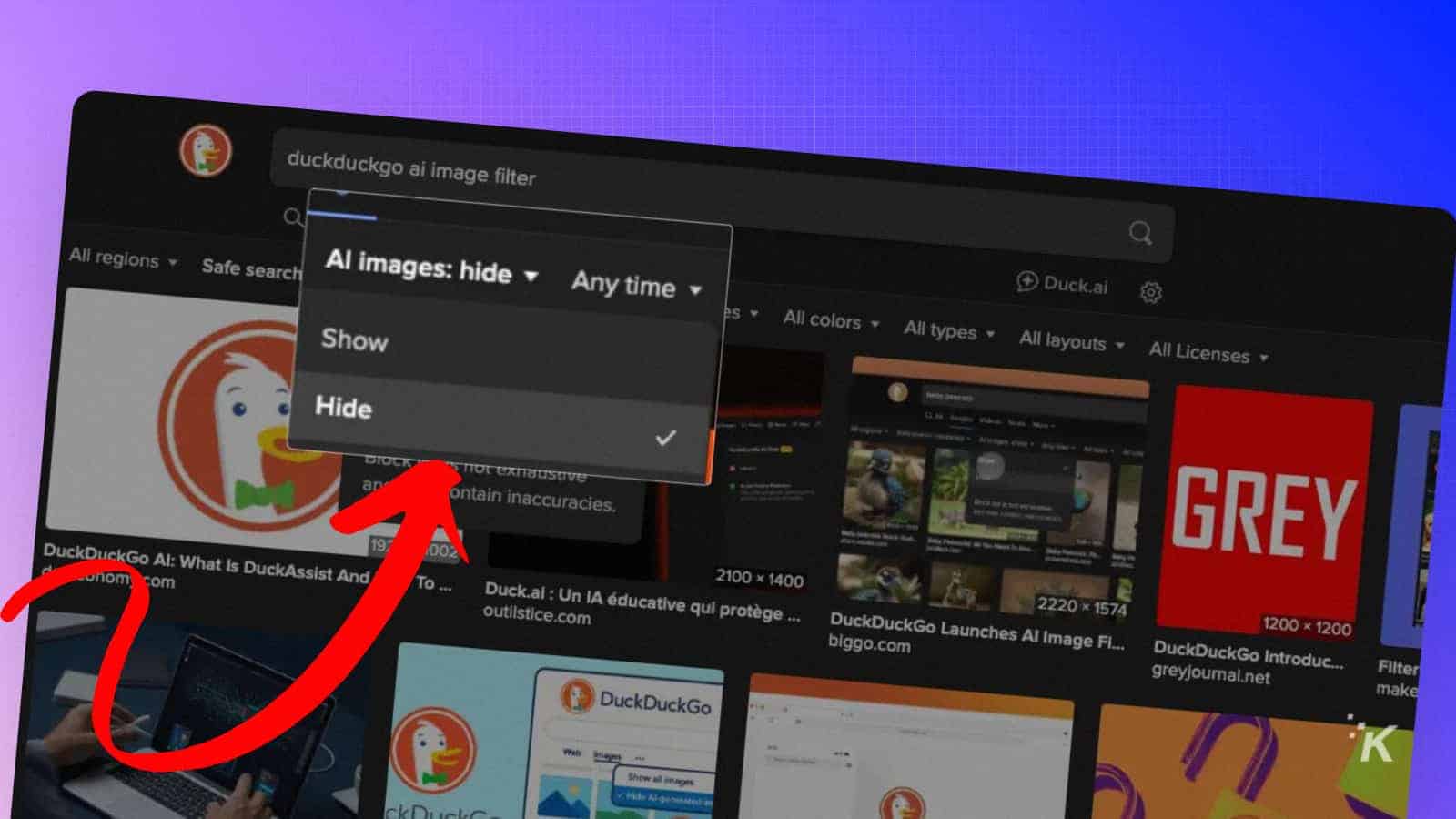AI
How to escape the flood of fake AI images Google keeps showing you
DuckDuckGo is leading the charge against synthetic content with its new filter, while Google and Microsoft remain silent.

Just a heads up, if you buy something through our links, we may get a small share of the sale. It’s one of the ways we keep the lights on here. Click here for more.
Synthetic images and videos are everywhere now. Tools like ChatGPT, Gemini, and Midjourney churn out photorealistic content that looks completely real.
Adobe Firefly, Higgsfield Soul, and Google’s Veo 3 model have joined the party. These tools create content so convincing that spotting fakes becomes nearly impossible.
The problem:
Most AI-generated visuals carry zero identification markers. No watermarks. No labels. Nothing tells you whether that viral image actually happened or was manufactured in seconds by an algorithm.
Naturally, social media platforms have become dumping grounds for synthetic content that masquerades as reality.
DuckDuckGo Steps Up While Others Stay Silent
AI-generated images are flooding the internet faster than anyone can track them, but DuckDuckGo just launched a filter to block synthetic content from search results.
“Our goal is to help you find what you’re looking for. You should decide for yourself how much AI you want in your life – or if you want any at all,” the company said in an announcement posted on the social media platform X (formerly Twitter).
How to use it:
DuckDuckGo now lets you filter out AI-generated images from your search results. Here’s how to use it:
- Head to DuckDuckGo
Open DuckDuckGo.com in your browser.
- Search for Images
Type in whatever you’re looking for (maybe “adorable ducks riding bicycles”—no judgment) and hit Enter.
- Switch to Image Search
Click on the Images tab at the top of the results page.
- Find the AI Image Search
Look for the filter labeled “AI images” along the menu above your image results.
- Tap “Hide”
In the dropdown menu, select Hide to remove AI-generated images from your search results.
- Change Your Mind?
Want to bring back the AI stuff? Just flip the filter back to “Show” and you’re good.

The filter relies on manually curated blocklists, including:
- The nuclear list from uBlockOrigin
- uBlacklist Huge AI Blocklist
DuckDuckGo admits their system won’t catch everything—but it dramatically cuts down synthetic noise polluting search results. Users can hunt for authentic images without wading through algorithmic garbage.
The Silence From Big Tech Speaks Volumes
Google and Microsoft could implement similar filters tomorrow. We don’t know why, but they choose not to. Their search engines keep serving up synthetic content alongside real images with zero distinction.
Users are left guessing what’s authentic and what was cooked up by AI models. This creates a credibility crisis that benefits no one, except the platforms that keep users glued to their pages longer and generate ad revenue from synthetic content.
This just goes to show how DuckDuckGo’s move highlights the fact that other search engines prioritize quantity over quality in their results.
Why This Matters Right Now
The gap between AI-generated and authentic content shrinks daily. Advanced models create visuals that fool experts, let alone casual browsers.
Without clear identification systems, synthetic content pollutes information ecosystems and erodes trust in visual media.
DuckDuckGo’s filter is the first serious attempt to address this problem at the search level. Other platforms need to follow suit before synthetic content completely overwhelms authentic material online.
We want to hear from you! Do you think tools like DuckDuckGo’s AI image filter are enough to tackle the flood of synthetic visuals online, or should Google and Microsoft step up too? Drop your thoughts in the comments below, or join the conversation on our Facebook or Twitter.




























